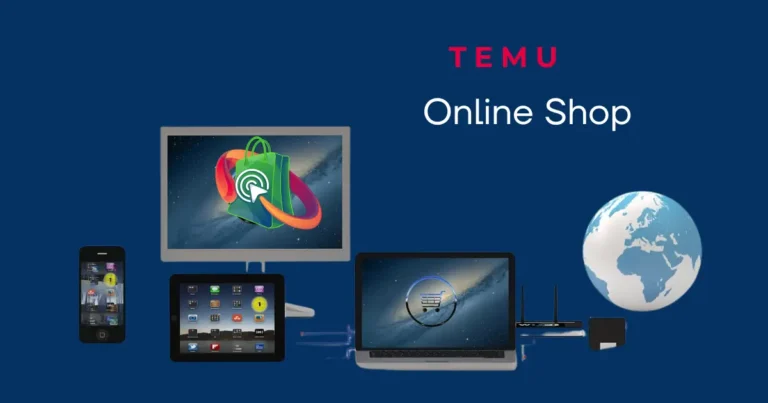Building a Strong Mobile App Marketing Team Organizational Structure for Success

In today’s digital-first world, where the average user spends over 5 to 6 hours on their smartphone daily, businesses must prioritize mobile platforms to stay relevant. A robust mobile app marketing team organizational structure is essential for businesses aiming to create successful mobile apps. This structure enhances coordination, efficiency, and targeted strategies that can significantly impact the app’s reach and user retention. This article delves into the essential roles within a mobile app marketing team, explaining how each contributes to a cohesive mobile app marketing strategy aligned with broader organizational goals.
Table of Contents
1. Overview of a Mobile App Marketing Team Structure
Why Structure Matters
A well-defined mobile app marketing team organizational structure provides clarity in roles and responsibilities, enabling team members to work efficiently and focus on their respective areas of expertise. A strong structure aligns marketing goals with technical development, ensuring that marketing efforts are synchronized with app performance and usability. This alignment is crucial for executing a holistic mobile app marketing strategy that maximizes user engagement and retention.

Cross-Functional Collaboration
Cross-functional collaboration ensures that the marketing team works seamlessly with developers, enhancing app features and overall user experience based on marketing insights and customer feedback. For instance, marketing insights on user preferences can influence design choices, while development updates on app performance can shape the mobile app marketing strategy for optimal results.
2. Key Roles in the Mobile App Marketing Team
To create a successful app, companies need a well-rounded team with specific roles, each contributing to different facets of the marketing strategy. Here are the fundamental roles and their responsibilities:
| Role | Responsibilities |
|---|---|
| Marketing Strategist | Defines the strategy, identifies target audience, and aligns KPIs with organizational goals. |
| ASO Specialist | Optimizes app visibility on stores through keyword usage, title optimization, and review management. |
| User Acquisition Manager | Manages campaigns to attract new users and retain existing users. |
| Content & Social Media Managers | Engages users through storytelling, social media campaigns, and community-building efforts. |
Marketing Strategist
The Marketing Strategist is the cornerstone of the mobile app marketing team organizational structure. Responsible for overseeing the mobile app marketing strategy, they research market trends, define target audiences, and establish performance metrics (KPIs). A well-planned strategy supports data-driven decisions that improve user engagement and align with business goals.
ASO Specialist
An ASO (App Store Optimization) Specialist plays a vital role by enhancing the app’s visibility on app stores like Google Play and the App Store. Through ASO tactics such as keyword optimization, compelling app descriptions, and A/B testing of visuals, they attract organic traffic, a cost-effective way to grow the app’s user base. The ASO specialist collaborates with content managers and user acquisition specialists to ensure the app’s online presence is optimized for search visibility.
User Acquisition Specialist
The User Acquisition Specialist focuses on attracting and retaining users through strategic campaigns on social media, Google Ads, and in-app advertising. By analyzing campaign performance, they refine the mobile app marketing strategy to maximize return on ad spend (ROAS) and optimize cost per install (CPI). This role is essential for driving consistent user growth, especially in the early stages of an app’s lifecycle.
User Acquisition Cost: In 2022, the average cost to acquire a new mobile app user was approximately $3.52 globally, underscoring the importance of optimized user acquisition strategies.
Content and Social Media Managers
Content and Social Media Managers engage users through compelling content across various channels. They focus on community building, responding to feedback, and using storytelling to create brand loyalty. Their efforts complement the app store optimization ASO strategies, ensuring a consistent brand presence across platforms.
Comparison of Objectives, Strategies, and Typical KPIs for Each Role in the Mobile App Marketing Team
| Role | Objective | Strategy | Typical KPIs |
|---|---|---|---|
| Marketing Strategist | Develop an overall marketing strategy | Conduct market research, set KPIs, and align with business goals | Campaign success rate, ROI |
| ASO Specialist | Improve app visibility and downloads | Optimize app title, description, keywords, and visuals | App store ranking, conversion rate |
| User Acquisition Manager | Attract and retain users | Run paid campaigns, optimize CPI, and track user acquisition | Cost per Install (CPI), User Retention Rate |
| Content & Social Media Manager | Enhance user engagement and brand presence | Publish engaging content, community building, and monitor feedback | Social media engagement rate, Content reach |
3. Integrating Marketing with the Mobile App Development Team
App Development Team Structure
For an app to be successful, the marketing team must work closely with the mobile app development team. This typically includes roles such as Product Managers, UI/UX Designers, Developers, and Quality Assurance (QA) Engineers.
| Development Team Role | Key Contribution to Marketing Team |
|---|---|
| Product Manager | Aligns app features with market demand and gathers user feedback for future updates. |
| UI/UX Designer | Creates a user-friendly and visually appealing interface that supports retention and engagement goals. |
| Mobile App Developer | Implements design and functionality based on marketing feedback to meet user expectations. |
| QA Engineer | Ensures app quality, identifying and fixing bugs that could impact user experience and retention. |
Collaborative Strategies
Collaboration is streamlined through project management tools like Trello, Asana, and Jira. Regular cross-team meetings help ensure all teams are aligned on project goals and updates, and agile development practices allow both teams to adapt quickly to user feedback or app performance insights.
App Retention Rates: The average app retention rate after 30 days is 32%, which emphasizes the need for a strong retention strategy within mobile app marketing teams.
4. Developing a Mobile App Marketing Strategy Aligned with Organizational Goals
An effective mobile app marketing strategy establishes the framework for success by setting objectives, defining target audiences, and monitoring key performance indicators (KPIs).
Setting Clear Objectives
Clear objectives provide direction for the entire team. Common goals include increasing app downloads, improving daily active user (DAU) counts, and enhancing user retention. By setting realistic KPIs for these objectives, the team can track progress and make adjustments as necessary.

Market Research and User Analysis
In-depth market research identifies the app’s core audience, their preferences, and behavior patterns. This research phase also includes competitive analysis, which helps in positioning the app effectively within the market. Understanding the audience and industry trends shapes the mobile app marketing strategy and guides the development team in creating features that resonate with users.
5. Building a Data-Driven Culture
A data-driven approach allows teams to monitor performance metrics, analyze trends, and make evidence-based adjustments to improve user experience and engagement.
Role of Analytics and ASO Metrics
Metrics such as install rate, retention rate, and user engagement provide actionable insights. For instance, tracking ASO metrics like keyword rankings and conversion rates helps the team understand which strategies drive the most organic downloads.
Defining and Tracking KPIs
KPIs provide measurable targets that can gauge the app’s success. Some common KPIs include:
- Install Rate: Tracks the ratio of installs to app store visits, offering insights into the effectiveness of the ASO strategy.
- Retention Rate: Measures the percentage of users who continue to use the app over time.
- User Engagement: Looks at how frequently users interact with the app and the average time spent on it.
KPIs for Mobile App Marketing with Definitions, Calculation Methods, and Typical Benchmarks
| KPI | Definition | Calculation Method | Typical Benchmark |
|---|---|---|---|
| Install Rate | Percentage of users who install the app after visiting its page | (Installs / Page Visits) * 100 | 10-20% |
| Retention Rate | Percentage of users who return to the app over time | (Returning Users / Total Users) * 100 | 30% at Day 1, 20% at Day 7 |
| User Engagement | Frequency and duration of user interaction with the app | Average Sessions per User, Time per Session | 1-3 sessions/day, 5-10 mins per session |
| Conversion Rate | Percentage of users who complete a desired action (e.g., purchase) | (Conversions / Total Users) * 100 | 5-10% |
| Cost per Install (CPI) | Average cost spent to acquire one install through paid advertising | Total Ad Spend / Number of Installs | $1 – $3 depending on region and platform |
6. Mobile App Store Optimization (ASO) and Its Place in the Organizational Structure
Core ASO Elements
Core ASO elements include optimized titles, descriptions, and visual assets such as icons and screenshots. Regular updates to these elements maintain the app’s relevance in a competitive app store environment, improving its discoverability for new users.

ASO Workflow Integration
Integrating ASO with the rest of the mobile app marketing strategy ensures that all content is aligned for optimal app store visibility. The ASO specialist can coordinate with the User Acquisition Specialist to ensure ad content aligns with the ASO-driven app store appearance, creating a cohesive brand presentation.
Cross-Departmental ASO Efforts
The ASO Specialist works closely with both the Content and Development teams to maintain consistency in the app’s branding and usability. This collaboration helps ensure that app updates or changes are reflected in the ASO strategy.
App Store Optimization: Apps that prioritize ASO (App Store Optimization) can see up to 30% increase in organic installs.
7. Scaling the Mobile App Marketing Team for Growth
Planning for Expansion
As an app grows, the mobile app marketing team organizational structure must adapt to handle increasing complexity. Expanding roles, like hiring a dedicated data analyst or social media strategist, allows for more specialized focus, which is crucial for maintaining growth momentum.
Preparing for Market Changes
The mobile app market is highly dynamic, with changing user expectations and technology advancements. Regular assessments allow the marketing team to stay informed about market trends, optimizing the app to remain relevant. For instance, as social media platforms evolve, social media managers may need to adjust their strategies accordingly to maintain effective engagement.
Agility and Flexibility
An agile team structure allows for quick pivots in response to market shifts or user feedback, enabling the app to stay competitive and maintain a high level of user satisfaction.
As mobile usage continues to grow, companies with a well-structured, agile mobile app marketing team organizational strategy will be positioned to engage users effectively and drive lasting app success.
Conclusion
A structured mobile app marketing team organizational approach, integrated with the mobile app development team, is crucial for successful app launch and sustained user acquisition. This collaborative framework drives app visibility, enhances user engagement, and supports long-term growth. By investing in a cohesive team structure, businesses can leverage each member’s skills, ultimately leading to both immediate and sustained success in the competitive mobile app market.







One Comment
Comments are closed.